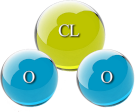Protocol T
T) TERMINAL (VERY SERIOUS DISEASES)
The Terminal Protocol, which is also known as Protocol T, is specifically designed for individuals who are in terminal or palliative stages of their illness, particularly when traditional medicine has not yielded the desired results or has proven ineffective. This protocol is grounded in the experiences and testimonies of numerous reported cases where patients made remarkable recoveries from cancer, even when their situation appeared to be hopeless and dire.
Procedure: The protocol is structured as follows:
It is important to consume an adequate amount of water that is tailored to the individual's daily intake needs, which typically ranges from 0.75 to 2 liters.
● Day 1: Administer 2 ml of CDS every hour, aiming for a total of 6 to 8 doses throughout the day.
● Day 2: Increase the administration to 2 ml of CDS every 2 hours.
● Day 3: Further increase to 3 ml of CDS every 2 hours.
● Day 4: Administer 4 ml of CDS every 2 hours.
● Day 5: Increase to 5 ml of CDS every 2 hours.
● Day 6: Finally, administer 6 ml of CDS every 2 hours.
Following this initial phase, for the subsequent five to ten weeks, the patient should take seven ml every two hours, maintaining a schedule of six to eight doses daily. After this period, for an additional four weeks, it is advised to take three ml every hour until complete remission is achieved. Should there be any signs of intolerance to the prescribed dose, it is essential to reduce the dosage back to the previous amount for three days before attempting to increase it again. This protocol is intended to be followed continuously without breaks, while antioxidants and mineral supplements such as magnesium and potassium can be incorporated as necessary.
It is crucial to eliminate sugar, alcohol, dairy products, gluten, and other sources of yeast from the diet entirely!
In instances of cancer, the use of albendazole or fenbendazole for one week for 3-6 month (under medical supervision) has shown good results in severe cases as well. It is generally recommended to take two tablets daily with meals for one week each month.
Depending on the specific circumstances and severity of the condition, albendazole may also be effectively combined with other treatment protocols such as B (baths), K, D, E, and Y. Albendazole (or alternatively fenbendazole) works by blocking glucose channels in helminth infections and seemingly also in cancer cells, given that these cells require glucose to grow and multiply effectively.
The incorporation of Plasmatrohn® alongside traditional cancer treatment has been extensively documented as being particularly successful in enhancing patient outcomes. For those seeking additional support and guidance during their treatment journey, comprehensive information on finding a qualified therapist in your vicinity can be easily accessed through the Kalcker Institute or by visiting the official website dedicated to this purpose.
